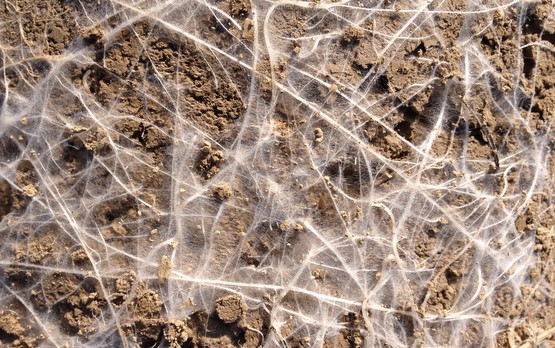
Root distribution in the soil
The characteristics of the root system are decisive in determining the timing and uptake of soil-borne resources by the crop, and can be crucial for yield formation. In addition to genetic information, physicochemical conditions in the root zone affect root depth and proliferation. In various projects, we study both the influence of root distribution on nutrient and water dynamics in the soil-plant system and the effects of management measures and site conditions on crop root characteristics. The focus here is on interactions between the root system and above-ground plant performance through e.g. variety selection and nutrient management, especially in light of increasing water scarcity during sensitive periods of phenological development.
Below-ground carbon and nitrogen inputs
Plants allocate organic carbon and nitrogen compounds to the soil through both structural root biomass and rhizodeposition (root exudation and turnover). These compounds are passively or actively released by living roots, serve different purposes, and vary in terms of the complexity of their molecular composition. Stable isotopes (13C and 15N) can be used to estimate rhizodeposition. Our research makes use of naturally occurring differences in isotopic composition, e.g. 13C abundance in C3 and C4 plants, as well as artificial isotope enrichment through tracer application. Our focus lies on the in-situ determination of rhizodeposition and the fate of below-ground carbon and nitrogen inputs in different cropping systems or depending on varying fertiliser intensity.
Residual effects of below-ground nitrogen inputs
Below-ground nitrogen inputs from legumes via roots and rhizodeposition are an important source of nitrogen in agricultural systems, particularly in organic farming. In 15N tracer studies, both the percentage of legume nitrogen out of total nitrogen inputs and the availability of residual nitrogen and its uptake by the following crop are determined in different cropping systems. The findings help us to improve the nitrogen supply of non-legumes such as cereals, maize or potatoes in conventional and organic agriculture, and to better estimate the environmental impact of the nitrogen inputs.
Publications
Contacts
Further Information







